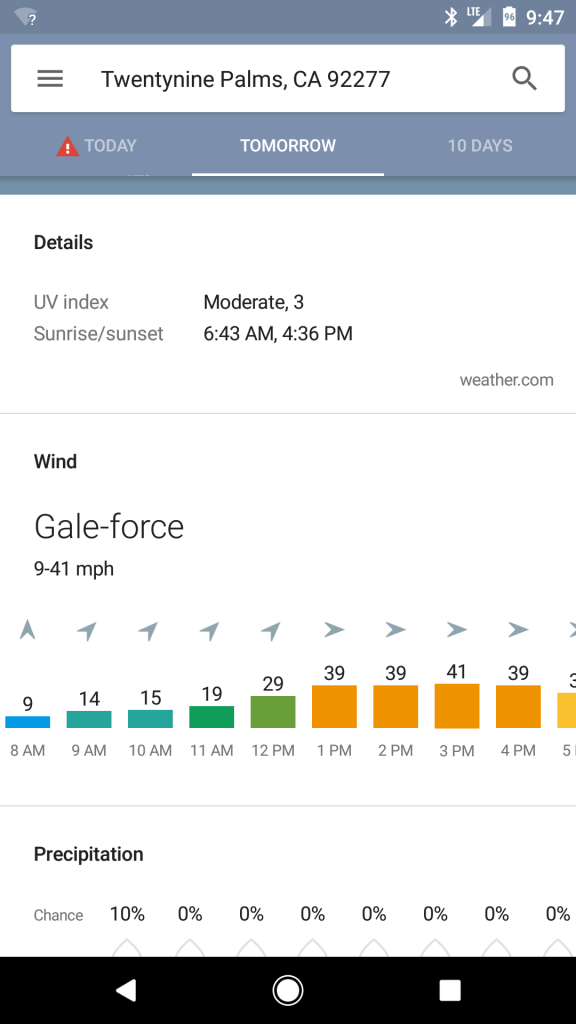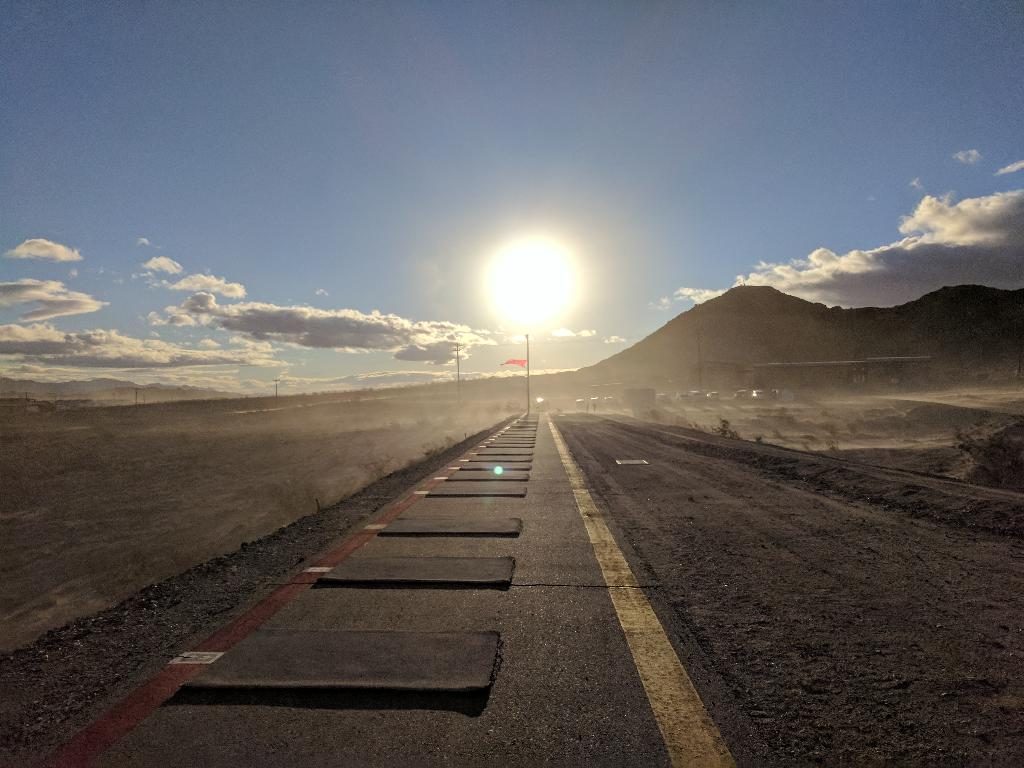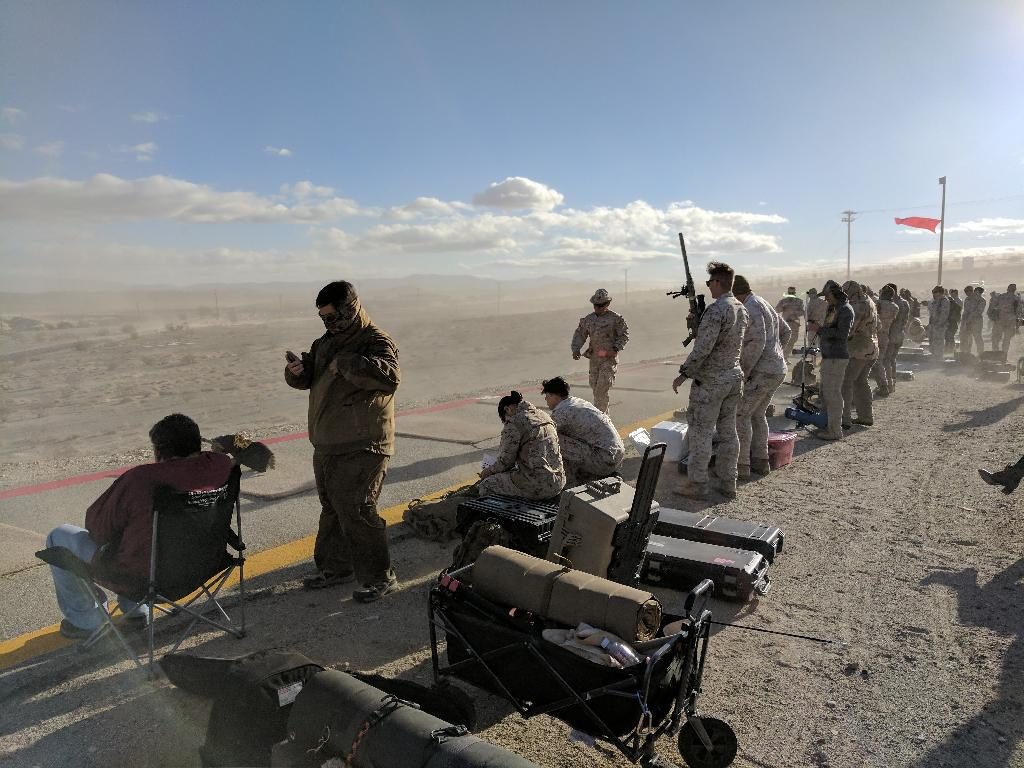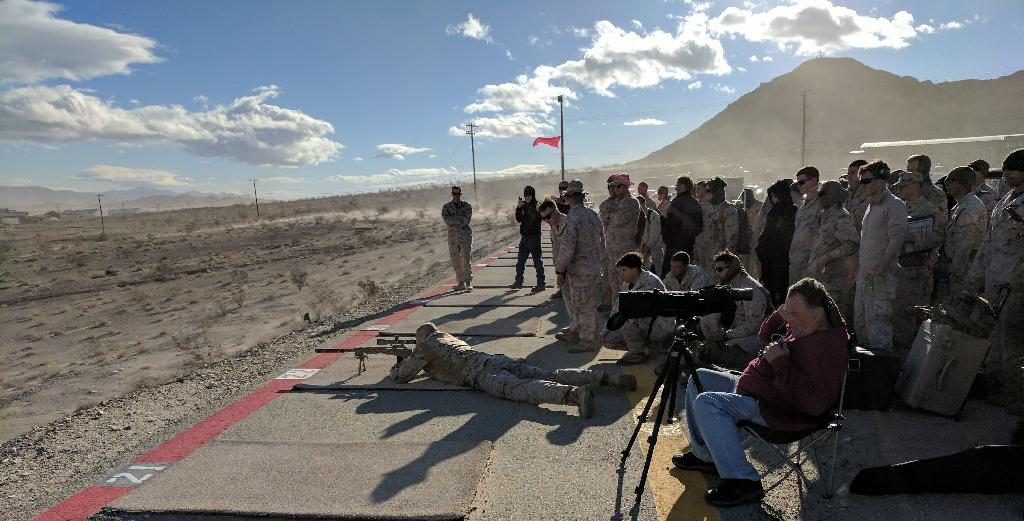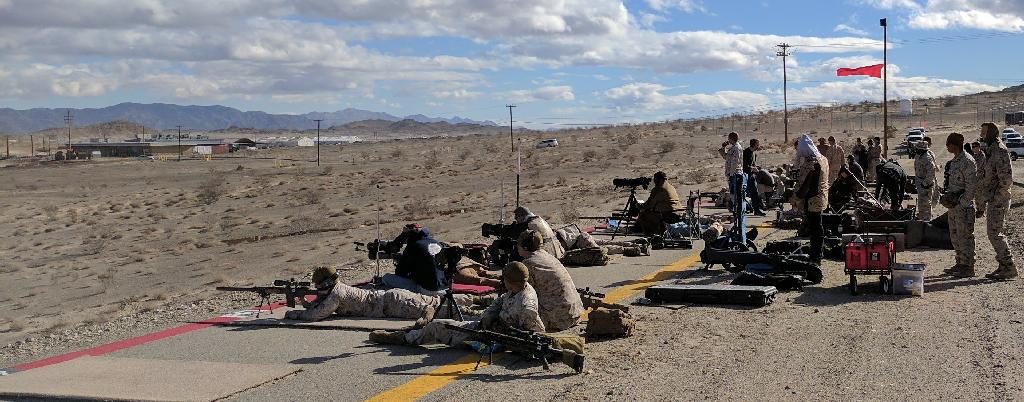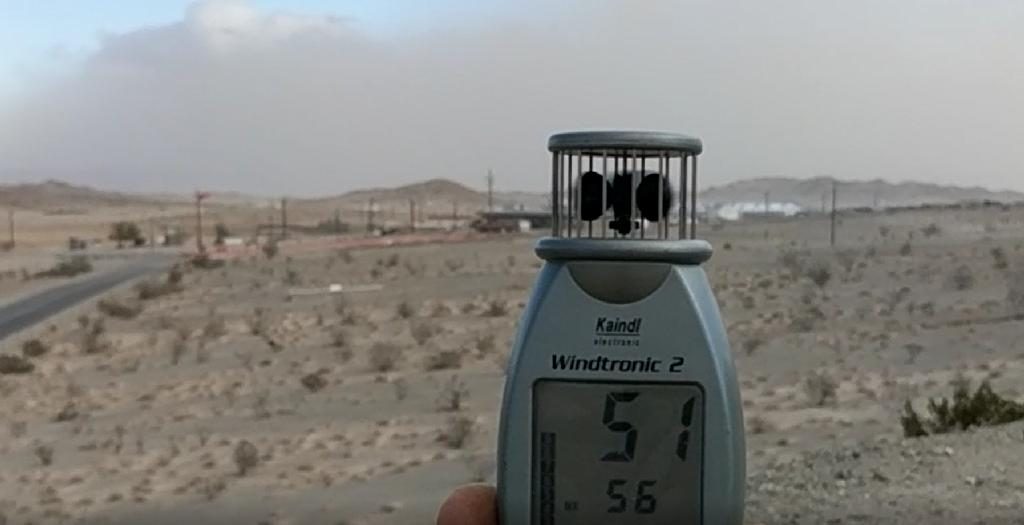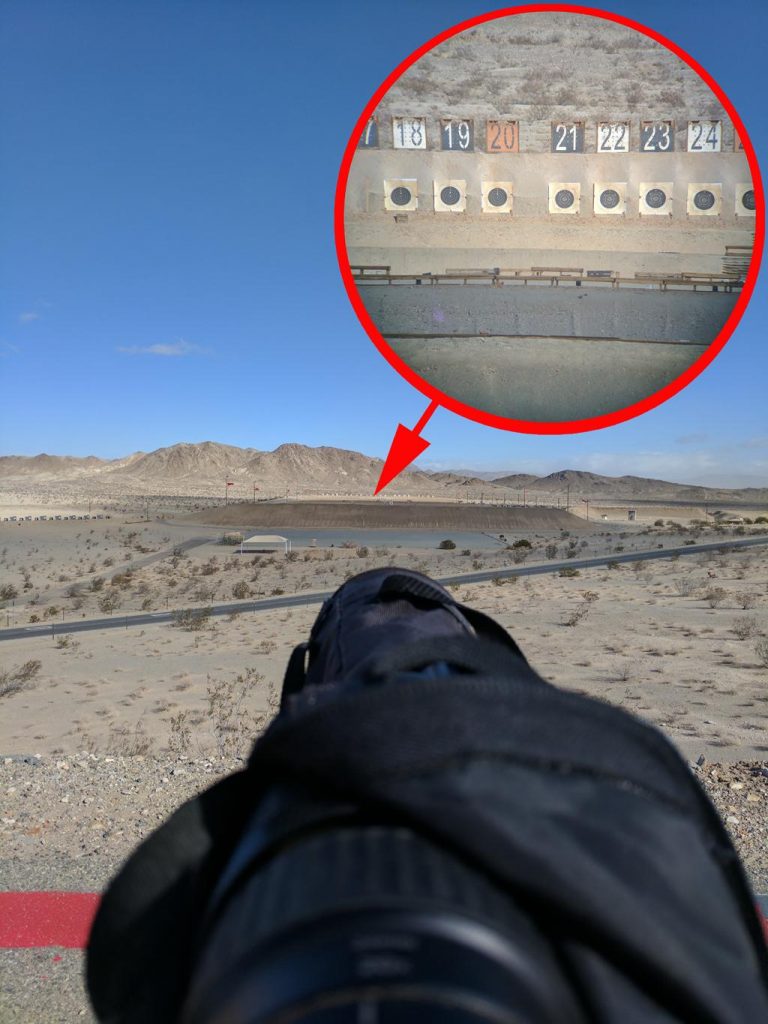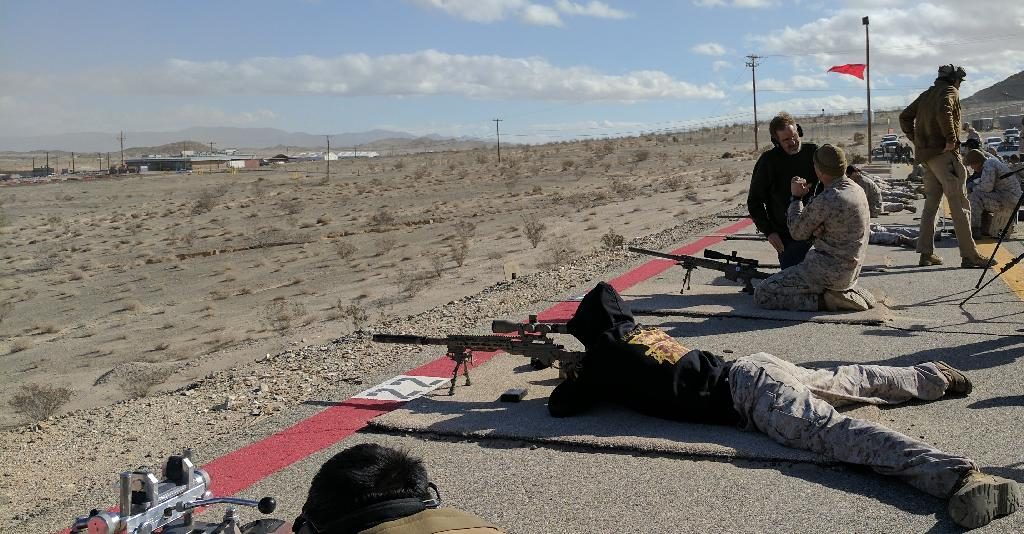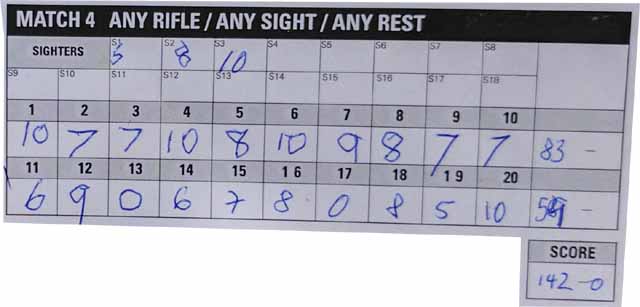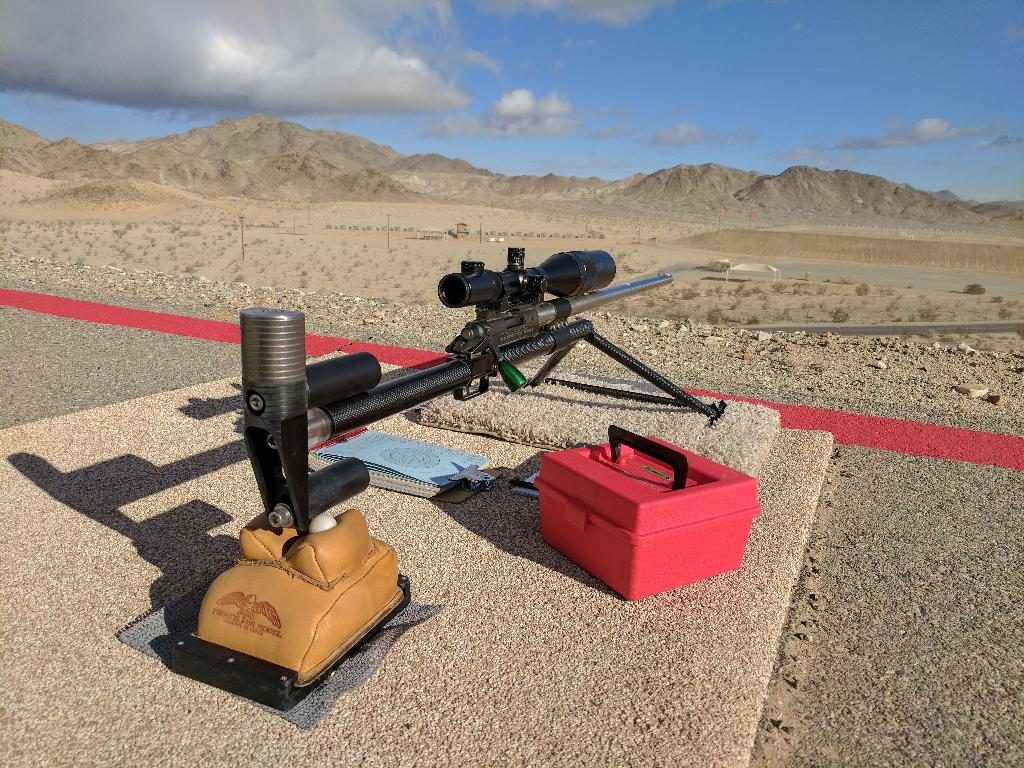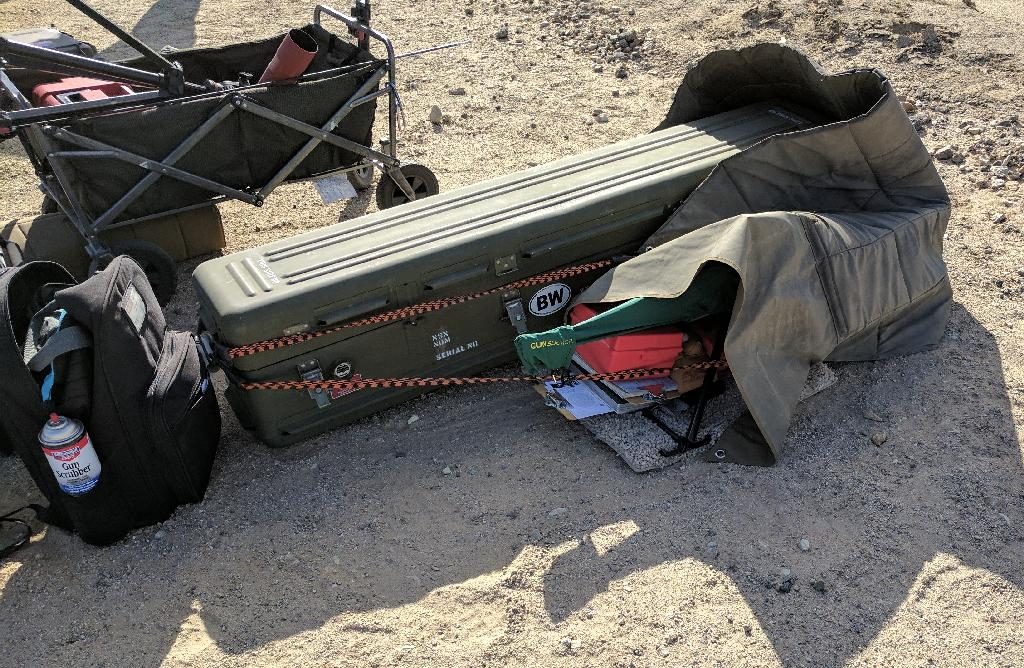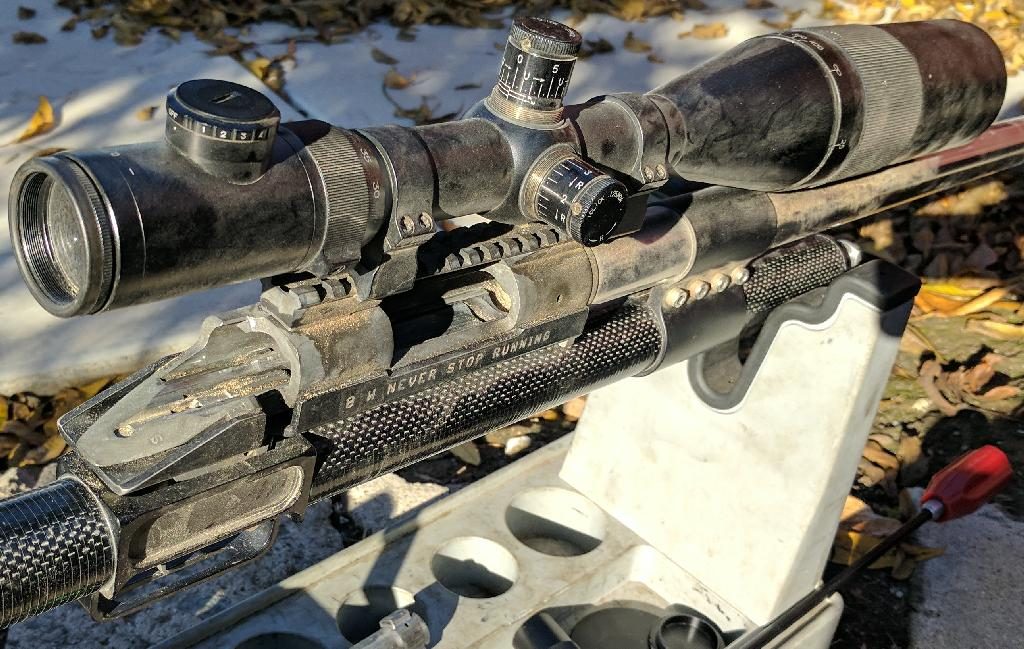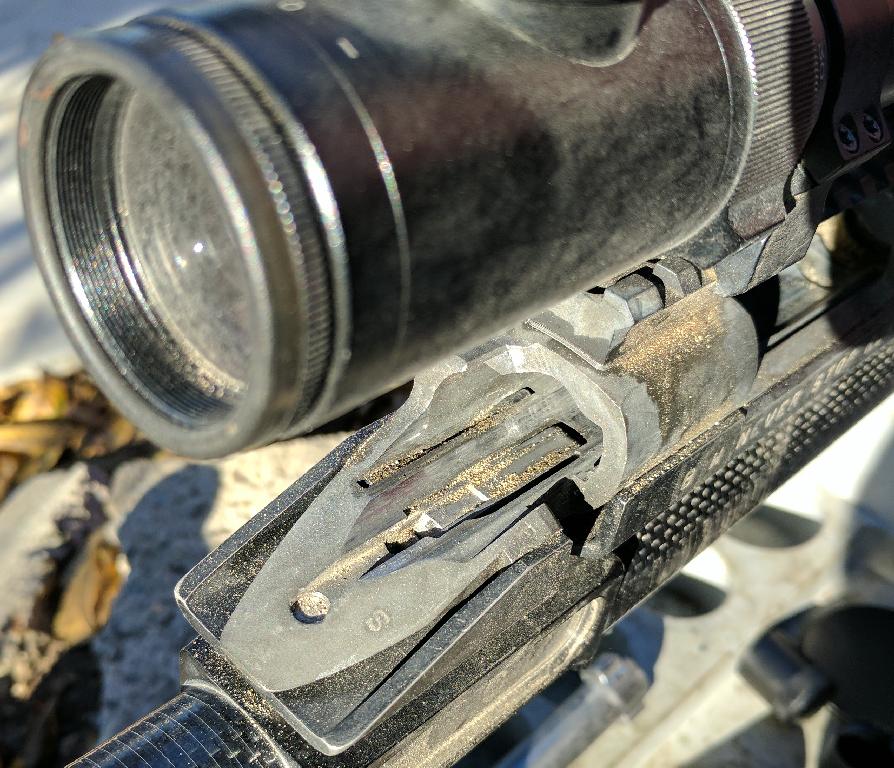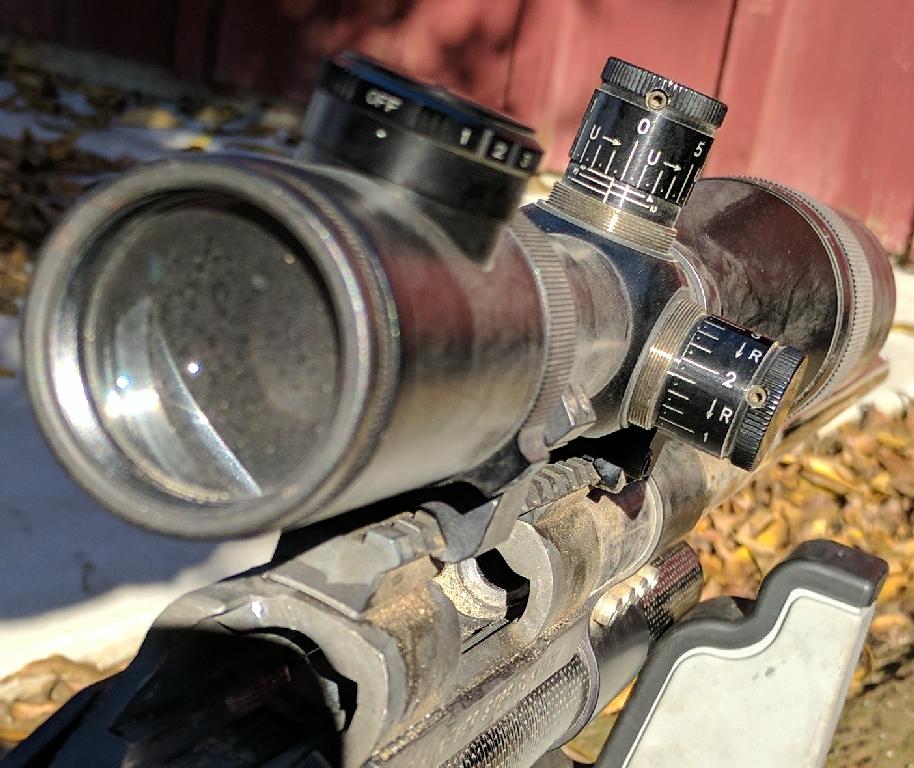2016 High Desert NRA Long Range Regional match report by Simon Wagner
Hi Guys,
Here’s a recount of the 58th Annual High Desert Match (Day 1 – Long Range 1000yd rifle) I attended on Friday the 16th. It was my first match to attend at the Twentynine Palms Marine base, and the first time I would be shooting under my newly acquired “Sharpshooter” credentials. I received my new ticket in the mail while I was away at a trade show and it became active two days before the match. I intended to break that new rank in with some good scores! As it turned out it was an epic day, and those of you who know me would know I don’t use that word fashionably or lightly.
However this event warrants full meaning of the word. Read on and you’ll see why.
It started with a week long escalation of an ominous high winds advisory which upon waking the day of the match I found had been upgraded slightly:
Umm, Gale Force? We’re shooting in gale force winds? Is there a setting on my scope for that?
Perhaps not, but of course this wasn’t going to deter me. Especially after an email to the Gunnery Sergent in charge of the match wasreturned with: “I will not be canceling the match. We are going to try our best to shoot through whatever the good Lord sends ourway!”. On the way out the door at the hotel, one of the front desk clerks wished me luck in the match and then added a foreshadowing tidbit, “You know, on days like this we can often hardly see the base at all for all the sand blowing around”.
Personally I’ve never been in a sand storm before and this lack of experience led me right into the middle of one without thinking twice. I promise you I will next time.
So we gathered from all parts of California and the Southwest. Even as far as Salt Lake City, Utah. All of us laughing nervously at small talk blurted out between gust of wind driven sand as the sun crawled out from it’s den amidst the dunes.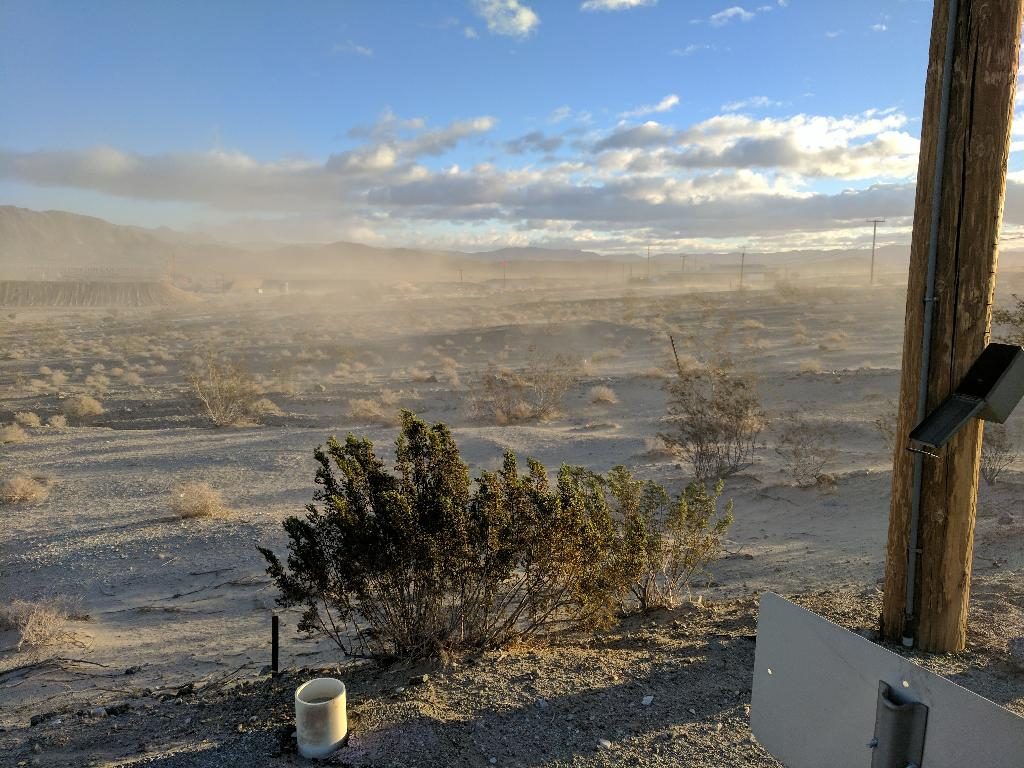
For as far as the eye can see we have earthen fog. This was going to be one heck of a rifle match.
The wind blown sand is the kind that finds it way between the dollar bills tucked in your wallet and help you to understand just how deep the pockets of your eyelids go. It stings and burns on open skin and embeds deep in your hair and clothing.
One of the many tools a long distance rifle shooter uses is the wind flag. In the photo below you can see the red wind flag pointing UP from horizontal. This is sometimes politely refereed to as the “go home” flag. Notice how none of us are looking at it, we’re too busy trying to keep our top layers of skin from blowing across the desert floor.
Here we gather for the opening ceremony ‘First Shot’ of the match taken by the Commanding General. I think he had quite an advantage provided by our human wind break! After breaking the shot and a Hollywood ‘second’ passed, his target lit up with a flash and bang. We all cheered, but I’m not sure anyone heard it.
We then began our first of three relays. I was on relay one, first to shoot. I think I actually sent the very first, uh, second round down range too. With great surprise to myself and the others in my squad I put that round on paper! It was only a 5 out of 10 but hey, no one had any clue of the wind value as of yet and the true directional vector it was taking. I had come withing three feet of the x-ring over half a mile away on a cold gun in the middle of gale force winds. I was jazzed, somehow I felt I could do this!
Here’s what we were dealing with: Winds averaging 25 which crept to 35 miles an hour as the day wore on, along with peaks and sustained gusts in the fifties! This wind was coming over our backs at our firing point, but were also sweeping at an oblique angle across the course around the side of the small range of hills flanking the range.
Below you can see our point of view from the firing point. This is looking over the top of my spotting scope and then through it with magnification set to 20x. If you look carefully you can see the red flags down the left side pointing what looks like across course, but they had some significant angle to them making their impact on the flight of our projectiles a trigonometric sub value of the winds main delivery. Those targets you see below are six foot square with an x-ring in the middle of only five inches.
Here is some classic instruction on the line. You can see the two methods we used that day for hitting the target. In the foreground a Marine takes aim in the “go for it” maneuver. In the background, another Marine instructs a civilian on an alternate position, we call it praying to the wind Gods.
In the previous picture the civilian receiving instruction was actually being generously coached on how to shoot the Marine issued rifle in front of them. His personal civilian rifle had filled with sand and stopped dead in it tracks after sending a single shot down range. This is a fate many suffered throughout the morning. The generosity of the Marines hosting and shooting in the event was fantastic as always. Several civilians were permitted to shoot military rifles.
My own rifle temporarily suffered the this fate too, but with some cursing, pounding and slamming I was able to carry on in the match. Several shooters had to switch to back up rifles. Mercifully the open bolt indicator rule was relaxed this day. This was because if you left your action open it would soon be full of sand and while intrinsically safe, a match without functional rifles doesn’t amount to much. More to come on that!
We all struggled mightily in this wind, and nearly all of us had misses. There was constant ‘cross fire’ – when you shoot a target other than your own. This usually happens because you are too focused on the target and not realizing you are aiming at the wrong one. This day, it was the wind blowing the projectile into the next target over! I had twenty-one minutes of windage on my scope, where each minute is ten inches at 1000 yards. This means I was actually physically pointing my rifle seventeen and a half feet to the left of my six foot wide target to hit the center of it.
In the first relay I shot a score that would make even a starting shooter hang his or her head in disappointment, 142-0X out of 200 points. Twenty of those points were lost due to two complete misses when the wind either let up or gusted just as I was breaking my shot. At least I ended on a good note!
I was on my way to a much better score in the second relay though, I managed to hit the five inch X-ring twice in close succession! I really felt like I was getting the hang of it. Note I was using the ‘go for it’ method: I had four misses and then three decreasing values of score for my sighting shots. Most would have kept shooting sighters until they did better. The problem with this is time. It took the guys in the pits minutes instead of seconds to find and score the shots on the targets due to the wild variations in shot placement and the sheer tendency of the target to try and ‘kite’ away from them. I could keep trudging along, hoping for better scores, but if I ran out of time any un-taken shots are recorded as a miss an minus ten each. It was obviously a good call to keep the pace on my part!
Undaunted by the elements and the low scores among the awesome ones, I had just sent my tenth shot for score when I saw the target board next to mine literally explode in the wind. It shattered and flew to pieces due to a huge gust of wind. At that point the Range Safety Officer called a cease fire. It was just too dangerous to the pit crew and far too damaging to the targetry to keep going on. There were two more days of shooting and these targets had to be operational for them.
So sadly just like that the match was canceled. We had to set the match ranking solely on our collective first relay results. In the F T/R class the winning score was a staggeringly low 158 and in F-Open class a befuddling low of 160. If you grade on a curve, my lowly 142 was an 89.8% in F T/R and 88.8% overall. It is quite possible these could have been some of the lowest ever recorded winning scores for the 58 years this match has been running.
We all retired to the shelter of the range instruction building and enjoyed talking at a normal level as we each individually dug the sand out of our eyes and ears and swapped stories over hot dogs and broken rifles.
So on to equipment and some sobering understand of what our Troops go through overseas. Below is my rifle right out of the box and staged for my first match. It looks pretty good right?
I did my best to keep it protected during the match, and after my first stage I built a shelter out of my shooting mat and rifle case to try and keep the boulders and tumbleweeds out of the gun. The can of gun scrubber was used copiously to try and flush the sand and congealed lubricant from the action. I even loaned it out to other shooters who were suffering in a similar manner. Lubrication is a dirt and dust magnet out here in these conditions. Everything precise was covered in it, and then of course upon being laid on the line now these parts were encrusted in powder fine dust and gritty dirt. Not good for precision close-tolerance equipment, not good at all.
And here is what we end up with when we take our firearms out in a sandstorm. Miraculously my gun was firing just as you see it below. A testament to the design and engineering put into the firearms both civilians like myself compete with and our servicemen and women carry into battle. I could hardly see through my scope, and the trigger was sticky and stiff. At one point it jammed solid in the ‘fired’ position which no longer allowed me to cock the rifle to fire a round. This was just a game. Imagine if your life or those of your fellow soldiers were in the balance?
Looking down into the trigger area you can see the dirt caked around the firing pin block in the floor of the action. This has to catch and hold the firing pin on loading the rifle and then pivot down into the gun to release it at the moment of fire. It was only because I sprayed it dry with solvent that it worked at all.
Here you can see the rear lens of the scope layered in dust and grime and if you look down into the chamber you can see the sand piled up in a drift just in front of the chamber. The bolt had to sweep through this to lock the action closed for firing. Careful design undertaken decades ago when the parent Remington bolt action design first appeared in the 1960s allowed for this to keep us in the ‘fight’. This was critical to troops deployed in conflicts from Vietnam to Afghanistan and beyond, long before I arrived this day at the competition!
I am happy to report that I was able to clean and make repairs to my rifle and equipment and it will fire another match. Long term effects are yet to be determined, but I suspect that both the rifle and the rifleman learned more than they lost on the 16th. I can honestly say I have never in my life had so much fun being so miserable. I wouldn’t have missed it for anything!

